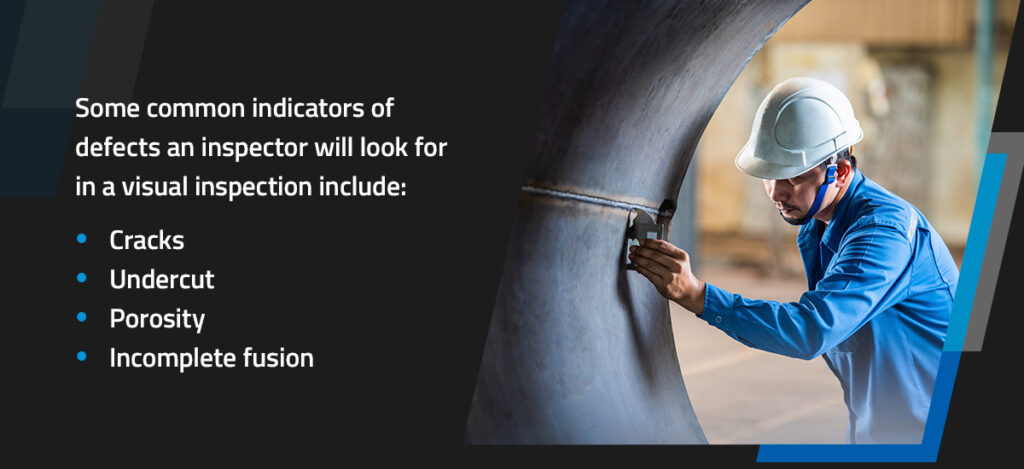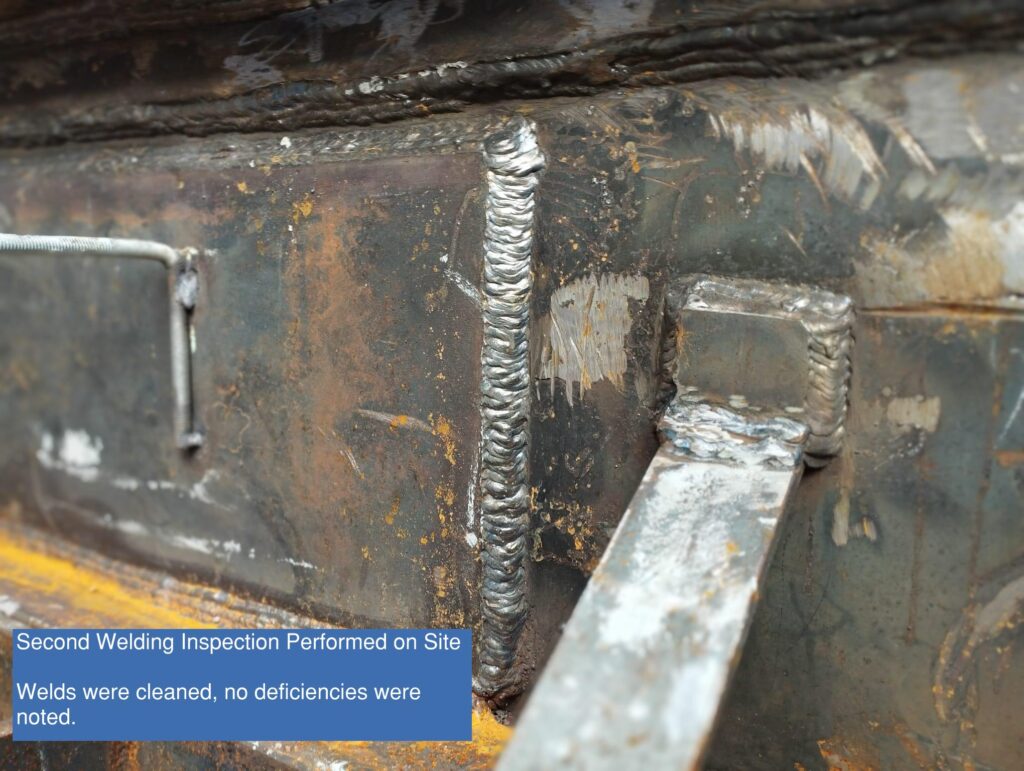Welding Inspection Racine: Guaranteeing Precision and Dependability in Every Weld
Welding Inspection Racine: Guaranteeing Precision and Dependability in Every Weld
Blog Article
Ingenious Techniques to Fillet Weld Examination and Screening: Enhancing Weld Top Quality and Conformity Standards
In the realm of welding, the quality and integrity of fillet welds play a crucial function in guaranteeing the structural stability and dependability of different industrial components. With the constant drive for boosted performance and conformity with strict standards, the exploration of innovative approaches to fillet weld inspection and screening has actually ended up being critical. As sectors evolve, the traditional methods might no more be sufficient in satisfying the demands of modern-day welding applications. By welcoming innovative technologies and approaches, a new perspective of opportunities emerges in the world of weld high quality assessment and adherence to conformity criteria.
Advanced Non-Destructive Testing Methods
Making use of state-of-the-art modern technologies, advanced non-destructive screening approaches play a crucial duty in ensuring the integrity and top quality of fillet welds. These methods, such as phased selection ultrasonic testing (PAUT) and magnetic particle screening (MPT), deal comprehensive understandings into the weld's interior framework without causing any damage to the product. PAUT, for example, uses numerous ultrasonic elements to check the weld from numerous angles, providing a detailed visualization of potential defects like absence of fusion or fractures.
By utilizing these sophisticated non-destructive testing techniques, weld inspectors can properly examine the high quality of fillet welds, making sure compliance with industry criteria and laws. The capability to discover defects early on not only boosts weld quality but additionally protects against expensive rework or failures in architectural stability, underlining the significance of these cutting-edge testing approaches in welding assessments.
Robotics and Automation in Inspection
The integration of robotics and automation has actually transformed the inspection procedure for fillet welds, improving performance and precision in quality analysis. Robotics supply specific control and repeatability in evaluating welds, guaranteeing reliable and regular results. Automated systems can be set to follow specific examination paths, making certain complete coverage of welds and lowering the risk of human mistake.
Robot evaluation systems outfitted with sophisticated sensing units can spot and determine weld features with high precision, giving in-depth data for evaluation. These systems can identify flaws such as splits, lack of combination, and porosity, making it possible for prompt restorative activities to be taken. Additionally, robotics and automation allow for real-time information collection and evaluation, providing instant responses to drivers and helping with quick decision-making procedures.
In addition, the use of robotics and automation in fillet weld evaluation enhances overall performance by decreasing assessment times and enhancing evaluation throughput. By enhancing the examination process, makers can make sure weld top quality and compliance standards are satisfied efficiently, ultimately resulting in set you back financial savings and improved item top quality.
Making Use Of Artificial Intelligence for Evaluation
Expert system plays a crucial duty in boosting the performance and precision of evaluation in fillet weld assessment procedures. By taking advantage of the power of AI, assessors can simplify the analysis of weld top quality and conformity criteria, bring about extra precise and dependable results. AI formulas can swiftly refine huge amounts of data from weld examinations, identifying issues or incongruities that may be challenging to understand the naked eye. This innovative modern technology allows real-time tracking of weld quality, permitting instant restorative actions to be taken if any kind of problems are discovered.
Moreover, AI systems can find out from past assessment information, continually enhancing their capacity to identify possible defects and variances in fillet welds. This flexible learning ability improves the total quality assurance process, minimizing the chance of human error and guaranteeing that welds meet the needed criteria. By integrating expert system right into fillet weld evaluation, markets can attain greater levels of efficiency, uniformity, and compliance in their inspection methods.
Portable Devices for On-Site Examination
 Enhancing area assessment performance, the adoption of portable tools revolutionizes on-site evaluation procedures for fillet welds. These tools provide flexibility and benefit, allowing assessors to carry out thorough evaluations in various places, consisting of challenging or remote environments. Mobile devices such as ultrasonic screening tools, magnetic bit examination tools, and electronic radiography systems provide real-time data and high-resolution imaging capacities, making it possible for fast decision-making and instant responses on weld quality.
Enhancing area assessment performance, the adoption of portable tools revolutionizes on-site evaluation procedures for fillet welds. These tools provide flexibility and benefit, allowing assessors to carry out thorough evaluations in various places, consisting of challenging or remote environments. Mobile devices such as ultrasonic screening tools, magnetic bit examination tools, and electronic radiography systems provide real-time data and high-resolution imaging capacities, making it possible for fast decision-making and instant responses on weld quality.One substantial benefit of mobile devices is their ability to simplify assessment treatments, decreasing downtime and enhancing overall performance. Assessors can conveniently transport these tools to different work sites, getting rid of the demand for carrying heavy machinery or click here now parts to off-site centers. Furthermore, the portability of these devices advertises cost-effectiveness by decreasing transport expenses and speeding up assessment timelines.
Additionally, making use of mobile tools for on-site inspection advertises positive quality assurance measures, as inspectors can quickly identify and resolve any kind of possible welding flaws or discrepancies. By including these ingenious technologies into on-site examination practices, welding professionals can ensure compliance with industry standards and enhance weld top quality, eventually resulting in boosted architectural honesty and safety and security in numerous welding applications.
Assimilation of Information Monitoring Solution
Having optimized on-site assessment procedures via the usage of mobile tools, the following phase includes the smooth integration of data administration systems to further enhance performance and information analysis abilities in fillet weld inspection and screening. Welding Inspection Racine. By integrating data administration systems into the evaluation process, companies can improve information collection, storage space, and evaluation. This integration allows for real-time surveillance of weld quality, immediate identification of problems, and punctual decision-making to remedy any issues that might develop throughout the examination process
Information monitoring systems play a critical duty in centralizing examination information, facilitating very easy access for accredited employees, and making certain information integrity and safety and security. With the assimilation of these systems, inspectors can produce detailed reports, track historical data for fad analysis, and improve general process performance. Furthermore, the integration of information administration systems makes it possible for seamless communication in between various stakeholders included in the inspection process, fostering collaboration and enhancing overall top quality control procedures. Ultimately, the integration of information management systems serves to raise the standards of fillet weld evaluation and testing, ensuring conformity with market guidelines and enhancing weld quality.
Verdict
In verdict, innovative methods to fillet weld inspection and testing have actually considerably improved weld high quality and conformity criteria. Advanced non-destructive screening methods, robotics, automation, expert system, mobile tools, and data monitoring systems have changed the way weld assessments are performed. By utilizing these technologies, sectors can ensure that welds fulfill the called for top quality criteria and regulations, inevitably improving general performance and Your Domain Name security in welding processes.

By utilizing these advanced non-destructive testing techniques, weld assessors can precisely assess the top quality of fillet welds, making certain conformity with sector requirements and guidelines. Mobile tools such as ultrasonic screening gadgets, magnetic fragment evaluation tools, and more tips here digital radiography systems provide real-time data and high-resolution imaging capacities, making it possible for quick decision-making and prompt feedback on weld top quality.
Having maximized on-site inspection procedures with the usage of portable tools, the next phase involves the seamless combination of data management systems to better enhance effectiveness and data evaluation abilities in fillet weld assessment and testing (Welding Inspection Racine). Eventually, the combination of information monitoring systems serves to raise the standards of fillet weld inspection and screening, ensuring compliance with market regulations and improving weld quality
 In final thought, innovative methods to fillet weld examination and screening have substantially boosted weld high quality and compliance criteria.
In final thought, innovative methods to fillet weld examination and screening have substantially boosted weld high quality and compliance criteria.Report this page